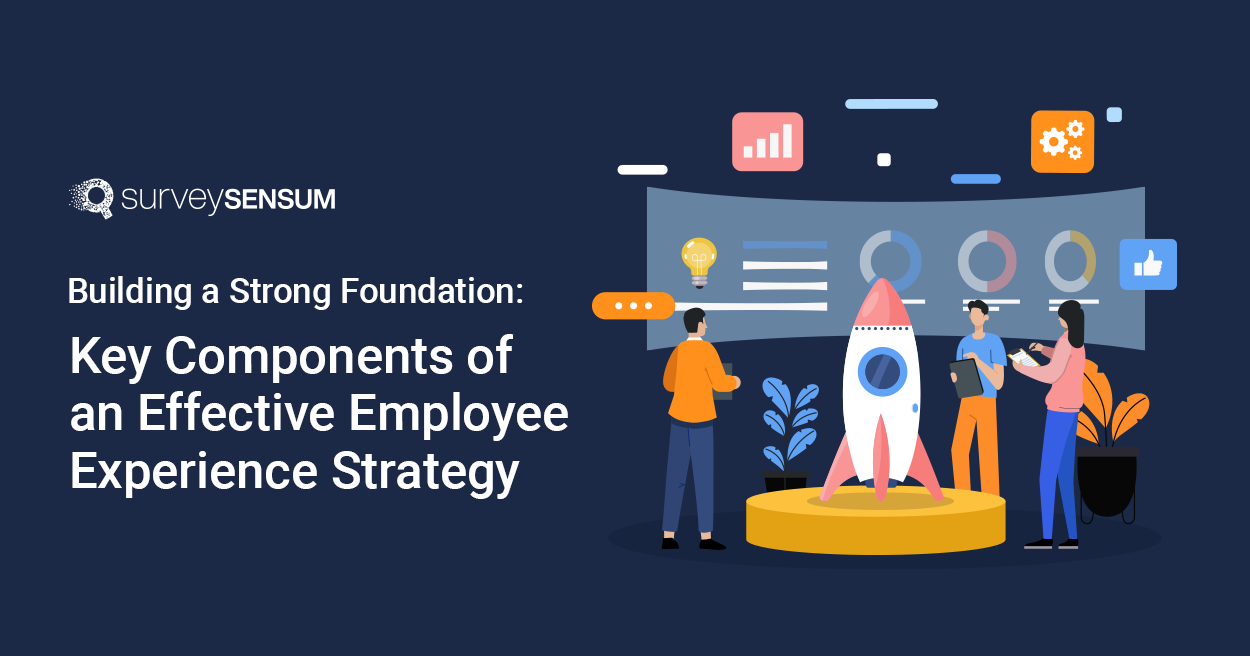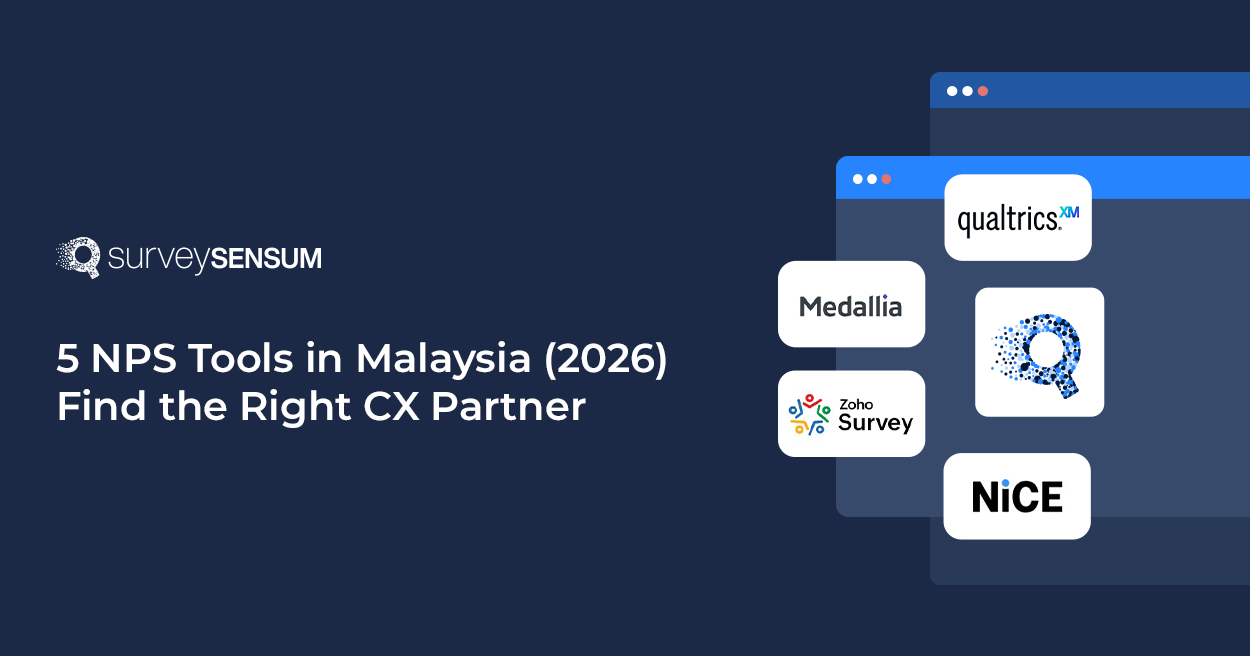

Imagine you are working in an organization that is incredibly famous and makes your resume stand out in a crowd of thousands. But when you join the workforce, you realize the stagnancy of growth and the lack of a work-life balance within the organization. So, what will you do – you’ll start looking for better opportunities.
It isn’t just you
Twice as many employees quit their jobs because they weren’t happy with the company’s culture and limited growth opportunities, compared to those leaving due to better pay and benefits.
Well, this can be detrimental both to your productivity as well as the company’s.
So, as an organization, would you want your employees to leave just for these reasons? I’m sure you wouldn’t.
What’s more – Gallup’s “State of the Global Workplace Report” says, that organizations with highly engaged employees experience 21% higher profitability.
So, yes, it’s time to start focusing on your employee experience (If you aren’t doing it already!)
And creating an effective Employee Experience Strategy is the perfect approach to it. With the help of a robust employee feedback tool, it not only has the potential to boost productivity but minimizes employee turnover as well; leading to a highly engaged workforce.
But how to do that?
Say no more — This article delves into the 4 pillars of the employee experience strategy that will help you build the foundation of an exceptional employee experience.
What is an Employee Experience Strategy?
The Employee Experience Strategy is an approach implemented by organizations to enhance and optimize their employee experience throughout their entire journey.
Alright, imagine your workplace as a big, bustling city. Your employee experience strategy is like the cool GPS guiding everyone through the streets of job satisfaction and good vibes.
Employee experience strategies function as a detailed roadmap that organizations employ to enhance the overall perception and satisfaction of their workforce, so the same workforce can use this experience to facilitate customer engagement strategies as well. The primary objective is to increase productivity and job satisfaction, contributing to a more positive and fulfilling work environment.
For a more practical example, let’s talk about recognizing your star players. Visualize having a structured system to shower your high-performing employees with tailored rewards, acknowledgment ceremonies, or even a golden ticket to professional development. It’s like hosting a party where everyone gets a trophy, and guess what? Happy employees stick around!
Here are the four pillars that organizations focus on to build and implement these strategies effectively. They serve as the foundation for a robust employee experience framework.
The 4 Pillars of a Strong Employee Experience Strategy
1. The Foundation: Onboarding and Welcome
You would be surprised to know that many studies indicate that a stellar onboarding experience plays a pivotal role in enhancing both employee engagement and retention strategies.
That’s the key to ensuring prolonged success for new hires – providing an exceptional and engaging experience from the outset.
First impressions matter, right? Imagine your new hire walking into a surprise party where everything is set up just for them. That’s the magic of a stellar onboarding experience!
So, to establish that early comfort for new employees consider these actions:
- Share login credentials and ensure their workspace is prearranged with remote access.
- Provide insights into the company’s history, clarifying its vision, mission, and goals.
- Facilitate introductions to teammates and, if beneficial, organize an ice-breaking session.
- Set clear expectations from day one, outlining what is anticipated of them.
- Arrange a one-on-one meeting with the manager to elucidate key result areas (KRAs) and responsibilities, fostering clarity.
- By prioritizing these measures, organizations can cultivate a positive onboarding experience that not only boosts employee engagement but also contributes to long-term retention.

HubSpot, a provider of inbound marketing and sales software, is known for its HubSpot Academy. It provides new employees access to a wealth of resources and training modules to quickly get up to speed. They place a strong emphasis on employees’ continuous learning and development.
2. Create Continuous Learning and Development In Your Workplace!
As reported by CNBC, Google’s renowned “20% time” policy empowers employees to invest a fraction of their workweek on projects of their choice, encouraging creativity and continuous learning.
Imagine a workplace where the air is charged with the excitement of constant growth and learning. Continuous learning and development aren’t just strategies; they’re the heartbeat of an exceptional employee experience. It’s the difference between a workplace that feels stagnant and one that pulses with vitality, where each team member is a participant in a grand symphony of growth. Employees who invest in their professional development can also benefit from a well-crafted resume, and a resume builder and a resume review service can help highlight new skills and achievements effectively as they grow within or beyond their current role.
So, why settle for a static work environment when you can have a living, breathing ecosystem of development?
Here are some methods that can be used to create such an environment:
- Training Programs: Structured training initiatives, including learning experience platforms both internal and external, provide employees with the knowledge and skills needed to excel in their roles.
- Mentorship: Pairing employees with experienced mentors fosters a supportive learning environment and allows for the transfer of knowledge and insights. By integrating mentoring software in your training processes, you can also track the progress of your employees, and later use that data to praise their achievements.
- Coaching: Personalized coaching sessions help employees address specific challenges, develop leadership skills, and navigate their career paths effectively.
- Role of Performance Feedback: Regular performance feedback is instrumental in guiding employees on their developmental journey. Constructive feedback not only identifies areas for improvement but also reinforces positive behaviors, contributing to continuous learning and motivation.

Salesforce invests heavily in its employees’ development through Trailhead, a gamified online learning platform that offers a wide range of courses and certifications. The gamification element adds an extra layer of excitement. It transforms the learning process into an engaging adventure, where employees earn badges as tokens of their accomplishments.
So, boost your employee experience by listening to their voice with SurveySensum!
3. Foster a Thriving Work Environment!
According to Buffer and AngelList’s “State of Remote Work” report, 20% of all workers identified communication and collaboration as their top challenge.
Collaboration and communication are the heartbeat of innovation, a force that propels your team towards greatness. So, foster an environment that’s more than just reporting, tasks, KPIs, and instructions, but a place where ideas can be shared and celebrated freely!
Oh, and don’t forget the importance of promoting work-life balance – it’s not just a trend, it’s a must-do for happy campers!
But how to implement all of these?
Well, here are some strategies that not only promote work-life balance but also take care of the well-being of your employees:
- Flexible Arrangements: First up, it is all about embracing flexibility. Throw those rigid schedules out the window! Give your team the freedom of adaptable work hours that fit their unique lifestyles. And hey, why not throw in some remote work options? Let them conquer tasks from their favorite coffee shop or their comfy couch. It’s all about giving them the power to thrive in both their personal and professional worlds.
- Compressed Workweeks: Recognizing the importance of work-life balance, you can introduce compressed workweek options. This innovative approach allows employees to condense their work schedules, providing them with extended periods for personal goals and relaxation.
- Wellness Programs: Now, let’s dive into the world of employee-centric wellness programs. We’re not just talking about hitting the gym; we’re talking about a holistic well-being experience. Throw in mental health resources like confetti into your wellness initiatives. Create an environment that’s not just about fitness but about supporting every aspect of your team’s well-being.
- Clear Boundaries: Encourage your employees to protect their personal time like it’s gold. Because, let’s face it, a happy and well-rested team is a powerhouse team. It’s all about ensuring that the work demands don’t sneak into their chill-out time.
- Supportive Policies: And last but not least, let’s talk about policies. Be the workplace hero by implementing supportive policies that scream, “We’ve got your back!” Generous leave benefits give your team the flexibility they need to conquer personal commitments and keep that work-life balance in check.

As a multinational technology corporation, Cisco has been able to engage employees across departments, borders, and time zones. Their strategy for success: a compelling brand vision, clear workplace standards, employee recognition, and continuous employee feedback.
4. Employee Feedback and Engagement
Employee feedback fuels their performance. Yes, you heard it right.
According to the Gallup studies, employees who receive regular feedback are 3.2 times more likely to be engaged.
That’s a huge number!
Gathering and acting upon employee feedback isn’t just a routine task – it’s what transforms a workplace into a thriving hub of innovation and satisfaction. It’s like having a treasure map to unlock the untapped potential of your team.
But here’s the real magic – it’s not just about gathering feedback; it’s about turning that feedback into action. When you act upon employee feedback, you’re not just acknowledging their voices; you’re demonstrating that their opinions matter, creating a sense of ownership and empowerment. For instance, addressing a negative feedback example, such as dissatisfaction with communication, can lead to meaningful changes that improve team dynamics and morale.
There are multiple methods to gather your employee feedback – Employee Feedback Surveys,
One-on-one meetings, Social Media Monitoring, Performance Reviews, and more.
But listening and acting on their feedback is just not enough! You need to measure and track the improvements too.
- Employee Net Promoter Score (eNPS): Measure employees’ likelihood to recommend the organization as a great place to work, indicating overall satisfaction.
- Retention Rates: Track employee retention to gauge the effectiveness of engagement initiatives.
- Employee Satisfaction Scores: Regularly assess satisfaction levels to identify trends and address potential issues promptly.
For organizations seeking to cultivate such an environment, partnering with the best web developers in India can offer innovative solutions and cutting-edge technologies to enhance training, mentorship, coaching, and performance feedback initiatives. By actively gathering, acting upon, and measuring employee feedback, you’re not just improving engagement and satisfaction – you’re fostering a culture of inclusivity, empowerment, and continuous growth within your organization.
Conclusion
Crafting a killer employee experience strategy is like building a masterpiece. You gotta look at every nook and cranny of an employee’s journey in the company. It’s not just about the 9-to-5 hustle; it’s about creating a vibe where people want to high-five Monday mornings! And remember, it’s not just about creating an employee experience strategy; it’s about fine-tuning it, jazzing it up, and staying on the pulse of what makes your team tick. And for that, a robust employee feedback tool like SurveySensum is of real help. It will not only automate your process of gathering employee feedback but will also enhance the company’s as well as the employees’ productivity and success.















